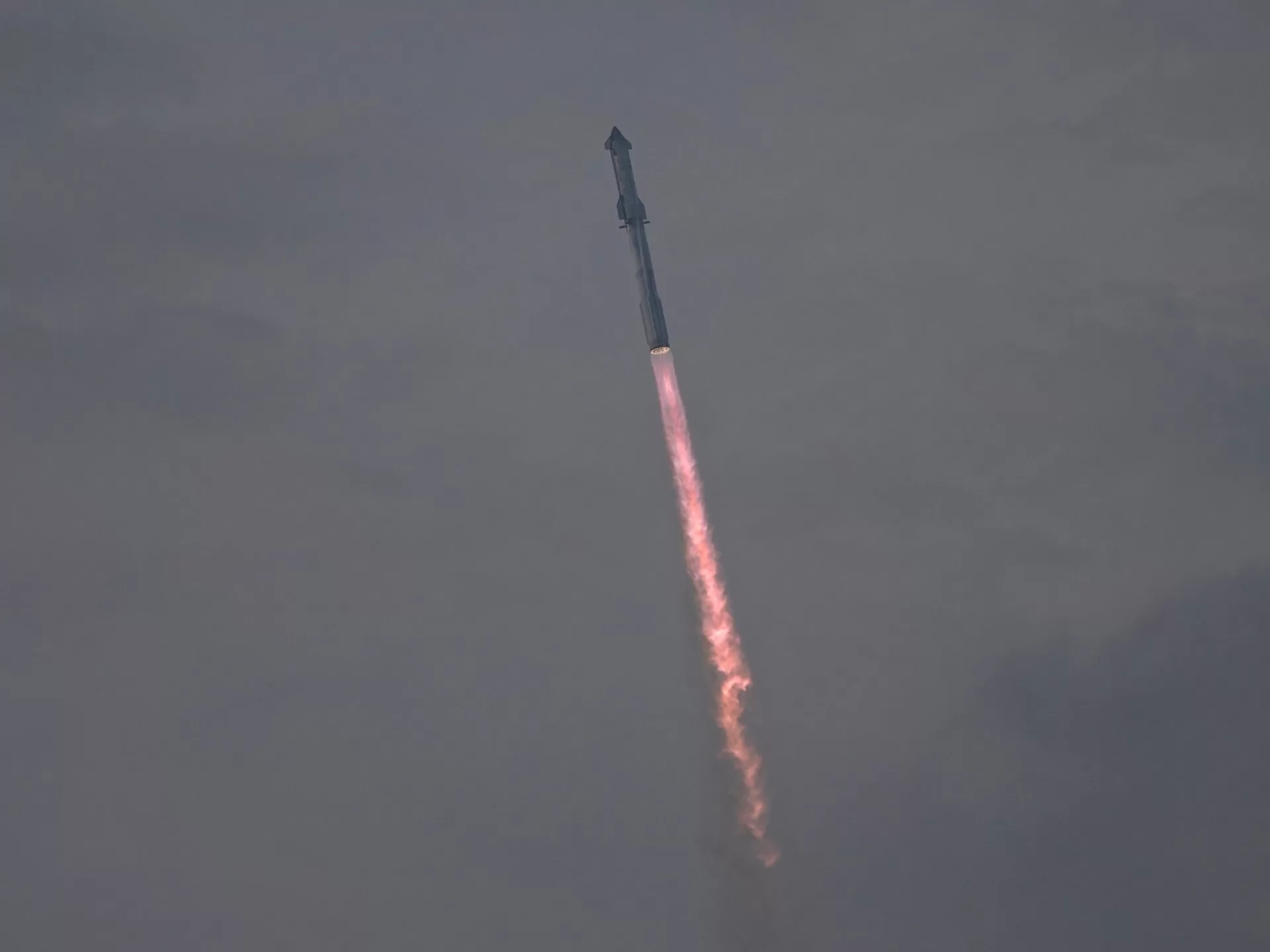Thursday’s test flight was the third conducted with Starship rockets, ahead of planned missions with the United States space agency NASA to send astronauts to the moon.
SpaceX, a company founded and owned by tech entrepreneur Elon Musk, livestreamed the latest Starship experiment, noting that the vessel flew farther and faster than it had in two previous tests.
However, as the rocket returned to Earth, it lost communication with SpaceX engineers. The livestream suddenly cut off, its final image showing the rocket’s heat shield flaring with friction. SpaceX later reported that the vessel did not survive the last leg of its flight. It was expected to splash down into the Indian Ocean.
Shortly after the mishap, the US Federal Aviation Administration (FAA) announced it would investigate the failed re-entry, a standard practice whenever a space flight goes awry.
Starship remains a prototype, but its development is key to both NASA’s planned moon missions and Musk’s own aspirations of space travel.
On the Musk-owned social media platform X, NASA chief Bill Nelson called the event “a successful test flight”. He gave a nod to NASA’s upcoming Artemis moon missions, voyages that are expected to feature SpaceX technology.
“Together, we are making great strides through Artemis to return humanity to the Moon — then look onward to Mars,” he wrote.
Musk also celebrated the test flight on X, writing: “Starship will take humanity to Mars.”
Liftoff of Starship! pic.twitter.com/FaNcasuKaq
— SpaceX (@SpaceX) March 14, 2024
Refining the world’s most powerful rocket
Starship, while still in its testing stages, is considered an advancement in rocket technology, as the largest and most powerful vessel of its kind.
With almost 16.7 million pounds (74.3 meganewtons) of force, its Super Heavy booster rocket produces almost double the thrust of the world’s second most powerful rocket, NASA’s Space Launch System.
Fully assembled, Starship also stands 121 metres (397ft) tall.
But the first two tests of the rocket ended in livestreamed explosions shortly after lifting off, spurring concerns about technical difficulties with the mega-rocket, as well as questions about the proposed timeline for the NASA collaboration.
The first test, in April 2023, resulted in SpaceX blowing up its rocket within minutes of launch, after the booster rocket and the second-stage engine failed to separate.
With the second test flight, held in November, the booster indeed separated from the spaceship, but both then exploded over the ocean.
SpaceX, however, has stressed these early tests were not expected to succeed, as the Starship prototype continues to be refined.
Congrats to @SpaceX on a successful test flight! Starship has soared into the heavens. Together, we are making great strides through Artemis to return humanity to the Moon—then look onward to Mars. https://t.co/VXq8Vp1sAc
— Bill Nelson (@SenBillNelson) March 14, 2024
SpaceX hails milestones
Thursday’s test, launched from a site near Boca Chica Village on southern Texas’s Gulf Coast, marked a major milestone for the company, though.
Unlike the previous two tests, which ended within minutes of launch, Thursday’s Starship completed most of its hour-plus flight trajectory.
SpaceX also reported that Starship accomplished several key objectives on its latest flight, including opening and closing its payload door to test its ability to deliver satellites and other cargo into space.
Starship flew halfway around the world before it began its descent, hitting a top speed of more than 26,000 kilometres per hour (16,000 miles per hour) and achieving an altitude of more than 200km (125 miles).
High-definition footage from an onboard camera showed the vessel firing its engines in space, with the curve of the Earth visible in the background.
Ground control said it stopped receiving signals when Starship was 65km (40 miles) above sea level. The company’s announcers, who had been narrating the livestream, ultimately declared the vessel “lost” before it could achieve its final goal of splashing down.
Trial-and-error approach
SpaceX has pursued a strategy of carrying out tests in the real world rather than in labs. But that has stoked condemnation from conservation groups that fear the fiery launches and falling debris may damage sensitive habitats around Starship sites.
In May, groups including the Center for Biological Diversity and the Carrizo/Comecrudo Tribe sued the Federal Aviation Administration over its approval of SpaceX’s tests, saying the government agency had failed to adequately assess their environmental impact before giving the green light.
Nevertheless, SpaceX has continued to hold test launches, an approach that has propelled it to the forefront of the emerging space flight market.
NASA currently relies on SpaceX’s Falcon 9 rockets to propel cargo into space, sometimes pairing it with the company’s Dragon Freedom capsule to send manned crews to the International Space Station (ISS).
SpaceX also has a network of satellites called Starlink that provides dozens of countries with high-speed internet and other connectivity services.
Still, the pressure is on for SpaceX to prepare Starship for NASA’s planned missions to land astronauts on the moon in 2026. It currently intends to use a modified Starship as the lander vehicle.
In a sign of what may be a modern-day space race, China is also hoping to land its first crew on the moon in 2030.
